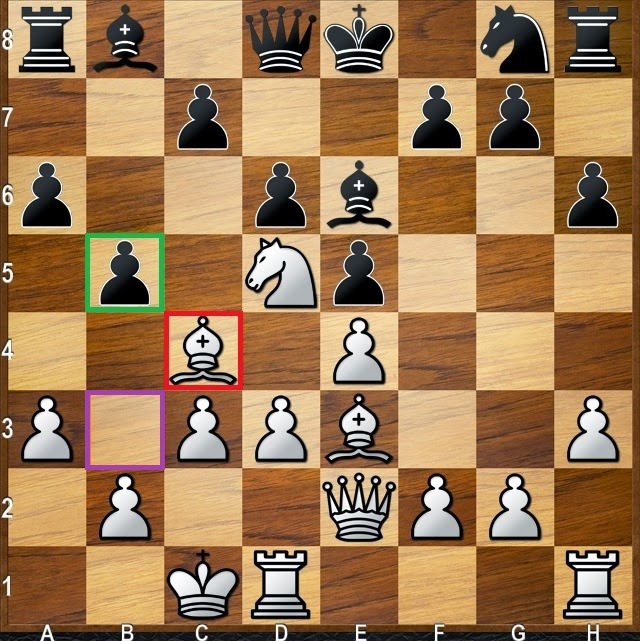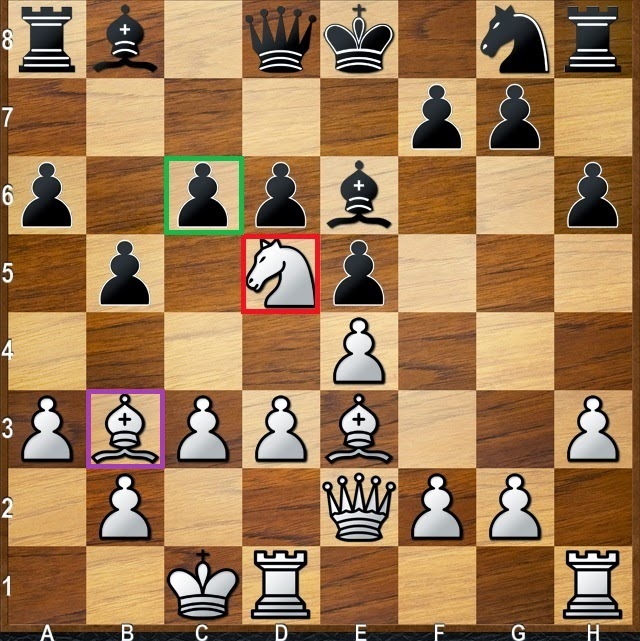In chess, decoying is a tactic that involves ensnaring a piece, usually the king or queen, by forcing it to move to a poisoned square. While a few chess authorities insist that decoying must require a sacrifice, it technically does not have to.
- Every piece is capable of decoying.
The purpose of a successful Decoying Tactic is to:
2. Upset your opponent's defenses.
3. Set up a checkmating opportunity.
Below are several diagrams
illustrating the decoying tactic.
A green colored box represents the attacking piece(s)
A blue colored box represents the path of attack
A red colored box represents the target(s) of the attack
A purple colored box represents the poisoned square
illustrating the decoying tactic.
A green colored box represents the attacking piece(s)
A blue colored box represents the path of attack
A red colored box represents the target(s) of the attack
A purple colored box represents the poisoned square
Diagram 1.1

...trying to force it to the poisoned B3 square
Diagram 1.2
(White's reaction)
(White's reaction)
White moves to the poisoned B3 square!
Diagram 1.3
(But why is the B3 square bad for white's bishop?)
the D5 knight cannot continue to block it from black's E6 bishop
Diagram 1.4
is forced to spend its next turn protecting its D1 rook




No comments:
Post a Comment